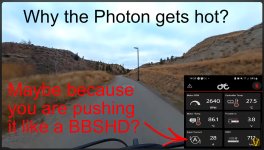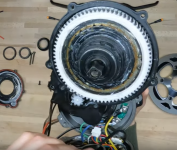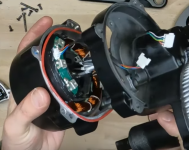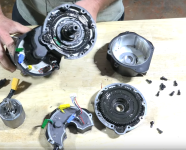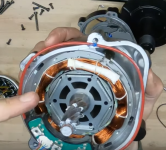3 months ago
Thanks for the breakdown! Allow our everyday rider and project engineer to add a few comments. His personal Photon is approaching 8000km and has been through floods submerging the motor and heavy mud conditions.
1. We'd like to state that the Photon is specifically targeted and designed to be an alternative choice for fully integrated EMTBs such as the Bosch and Shimano motors. Ensuring the system runs smoothly with pedal assist is the main performance goal. We wanted to get as close as possible to match the pedal assist feeling of fully integrated systems with a bit more ohms. Throttle capability is simply an added advantage for a burst of power when needed. Running at full throttle on 1200W makes complete sense as to why the motor will heat up fast. This is not what the system was intended to be used for. You can, however, run it continuously using throttle in the appropriate gear and at 750W rated power.
2. Regarding the assumption of outrunner being the wrong choice is quite relative if you look at our design goals. The outrunner motor was chosen due to its superior performance in such a small form factor in terms of torque and efficiency. If the design had an inrunner, it would be twice the size with lower torque and terrible efficiency for power larger than 700W. If we did this, we would be sacrificing the good chainline as well as clearance between the motor and bottom bracket. In the Photon, you will also notice that it is potted, unlike other ebike and skateboard motors. This allows the coil temperature to conduct to the potting (direct contact) and then to the stator plate itself (again, direct contact). From the stator plate, there is a direct pathway to conduct heat to the whole motor system including the heat sinks.
3. The hall sensor failure that you have experienced was also not due to the temperature.The PCB for the hall sensor is also rated up to 140deg C. ESD protection is the reason for the hall sensor failure. Hall sensor failures are extremely uncommon given the amount of Photons sold and have also been addressed and revised by the development team.
4. From our records and our resellers' records, the quality of the latest batch is very stable. We do apologize for the initial batch failure rate being higher than what we aimed for (although not near the levels reported by some online), we tried our best to test with third-party lab and in-house as much as we could before launching, but some issues arise only in mass production. Since then, we have addressed the issues that caused the failures. Meanwhile, we are improving our servicing networks and improving parts availability to ensure a quick turnaround time if there are servicing needs.
5. A point that we'd also like to stress is that the failures that have been seen so far are 90% caused by us upscaling our manufacturing. For a small company to start mass producing is a major challenge. There has been a few design modifications needed but these are very small adjustments and do not affect the base design of the system. We have been revising our scaling-up strategy along with the manufacturing and assembly processes. This includes better implementation of QC procedures.
6. Running it in the "Unrestricted" mode is no problem at all in terms of durability but you will run into thermal limiting. We have enabled access to the motor's peak performance simply because it's great fun to have that available when riding.
7. Shhhhhhh, we don't talk about the Proton yet... although... it's aimed to run at higher power levels continuously but it will also be heavier and have a larger form factor. Details about the motor itself will also be released later on. We're taking our time and working on scaling up our production and quality capabilities first.


